|
|
Post by ErrolC on Mar 10, 2021 9:19:53 GMT 12
We now move to the Air Force Centenary Aircraft Showcase at Temora Aviation Museum, Sunday. On the Sunday the full Roulettes display routine was performed, with a full six PC-21 formation. ... One thing that was noticable in the full six aircraft routine was the degree to which the smoke at times obscured the position and movement of the displaying aircraft. There was a reasonable breeze, but the amount of smoke being generated by the two smoke emitters on each aircraft meant that at times there was a virtual smoke screen between the aircraft and the crowd. The breeze was not sufficient to disperse the smoke and only helped spread it. My thoughts are that the Roulettes need to wind back the amount of smoke being generated particularly in the full six aircraft display otherwise it will become a distraction rather than an enhancement to their display routine. Count me as someone that thinks the scheme is rather too busy. Interesting about the smoke. Steadfast definitely has long-lasting smoke as a significant part of the display, I can see how it could be a negative for a team. |
|
|
|
Post by Mustang51 on Mar 10, 2021 17:45:27 GMT 12
tbf2504, the display of the registration on the Mustang is the owner's choice
|
|
|
|
Post by colford on Mar 10, 2021 19:19:12 GMT 12
Sunday. Like Saturday, but different, good different. This is the time when the high level cloud provides a bit of a filter on the strong direct sunlight which makes the glare and reflections off polished surfaces not such a photgraphic headache, but also slightly slows the rate of sunburn of the avid watchers on the ground. There were times you could hear the audience sizzle and the smell of SPF50+ sunscreen threatened to overpower the smells of AVGAS and AVTUR. But onto the Sunday photographs, a selection from the first part of the day.  Tiger Strike Sunday Tiger Strike Sunday by Colin Ford, on Flickr  Tiger Sunday Score Tiger Sunday Score by Colin Ford, on Flickr  Harvards Sunday 1 Harvards Sunday 1 by Colin Ford, on Flickr 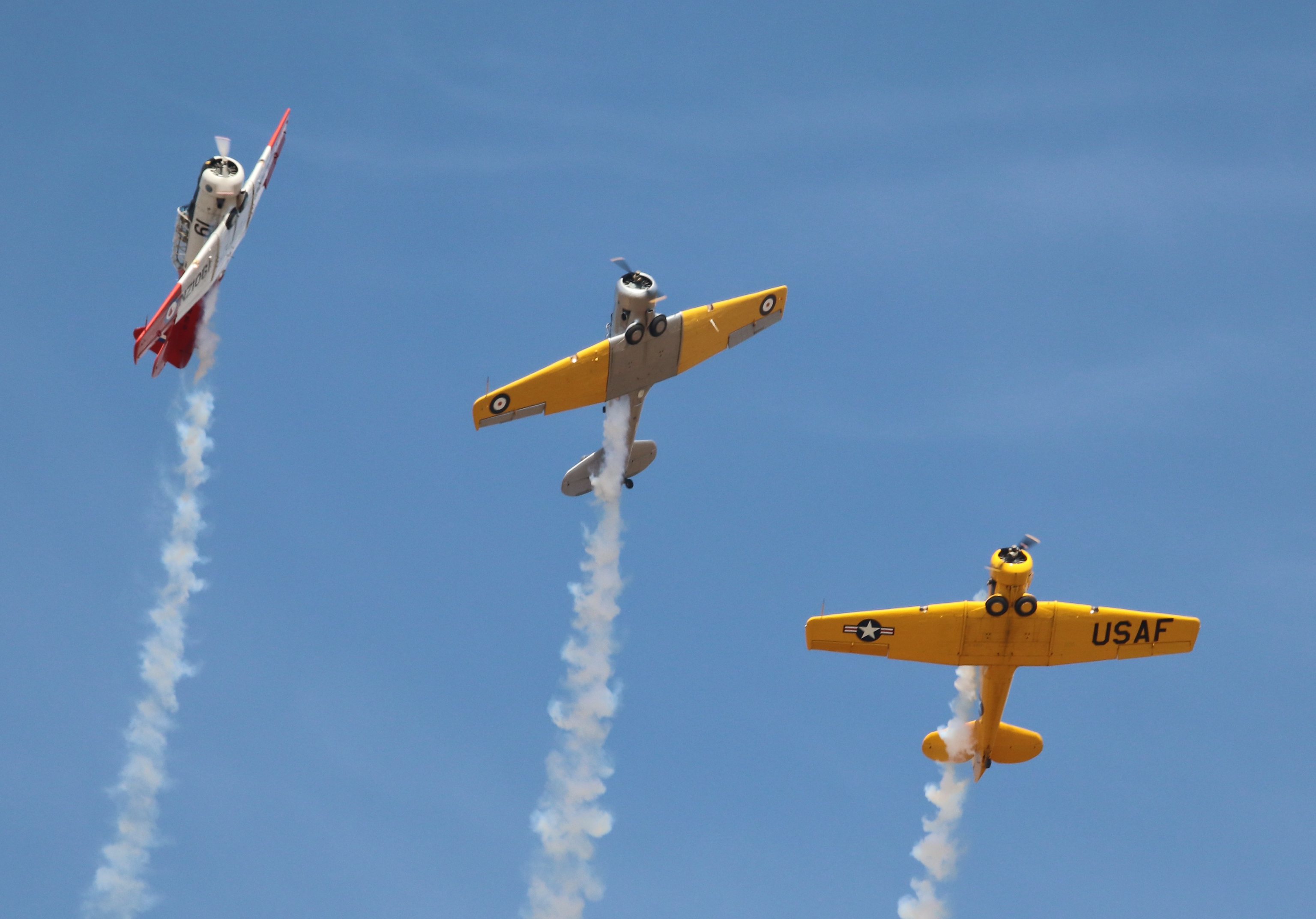 Harvards Sunday Rolling Harvards Sunday Rolling by Colin Ford, on Flickr  Harvards Sunday Climbing Harvards Sunday Climbing by Colin Ford, on Flickr 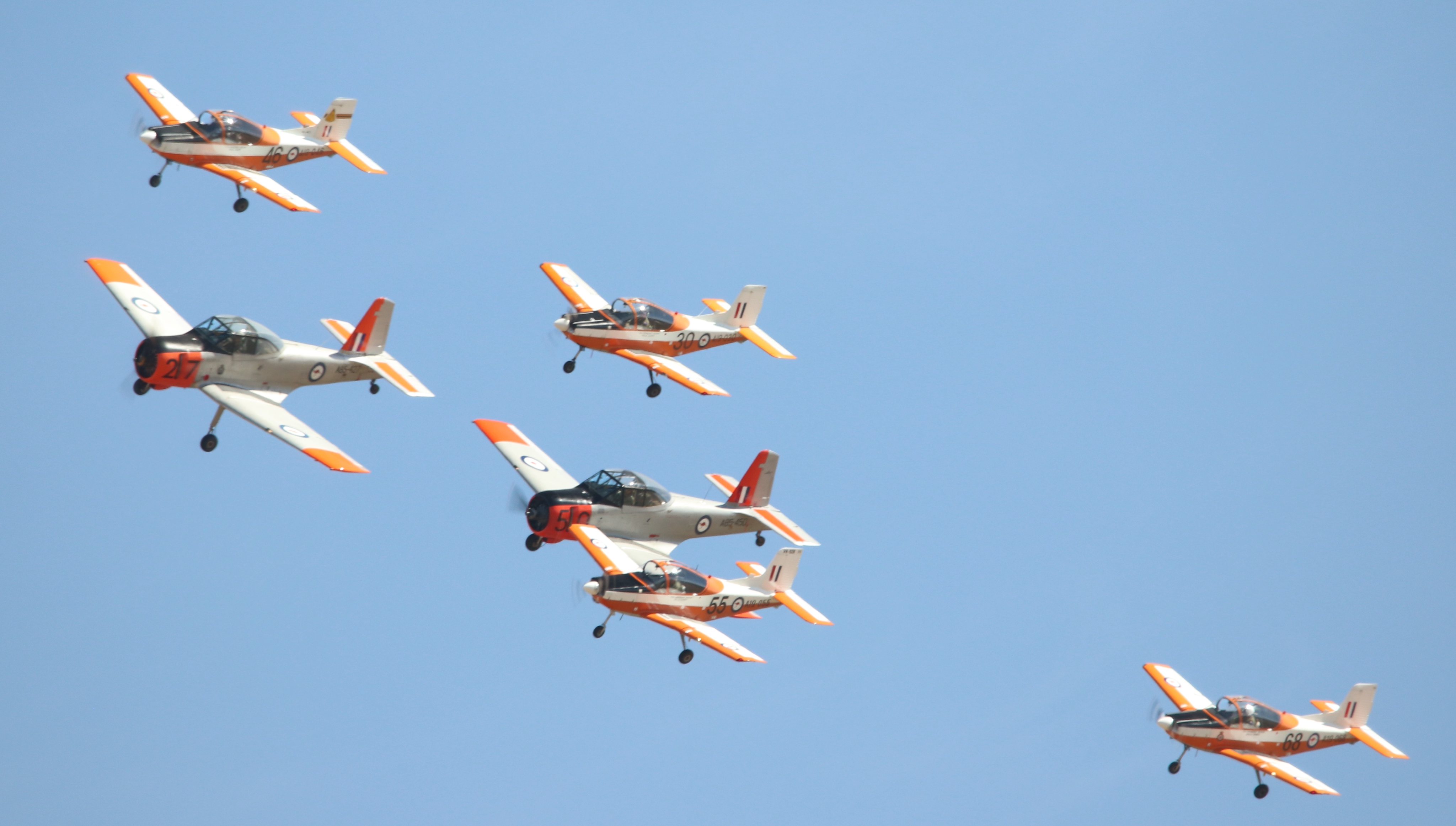 Trainer Gaggle Sunday Initial Turn In 600mm Trainer Gaggle Sunday Initial Turn In 600mm by Colin Ford, on Flickr The trainer gaggle tends to make big circles in the sky, so at their furthest point away from the display line, they turn in and this is at 600mm. Just a hint of heat and atmospheric shimmer.  Adv Trnr Sunday Break Adv Trnr Sunday Break by Colin Ford, on Flickr  Spitfire Sunday Dusty Take Off Spitfire Sunday Dusty Take Off by Colin Ford, on Flickr  Spitfire Sunday Tail Up Spitfire Sunday Tail Up by Colin Ford, on Flickr  Spitfire Sunday Up and Away Spitfire Sunday Up and Away by Colin Ford, on Flickr  Spitfire Sunday Gear Up Spitfire Sunday Gear Up by Colin Ford, on Flickr  Spitfire 2 Sunday One Wheel Spitfire 2 Sunday One Wheel by Colin Ford, on Flickr  Spitfire 2 Sunday Climb Out Spitfire 2 Sunday Climb Out by Colin Ford, on Flickr  Spitfire Trio Sunday - 1 Spitfire Trio Sunday - 1 by Colin Ford, on Flickr 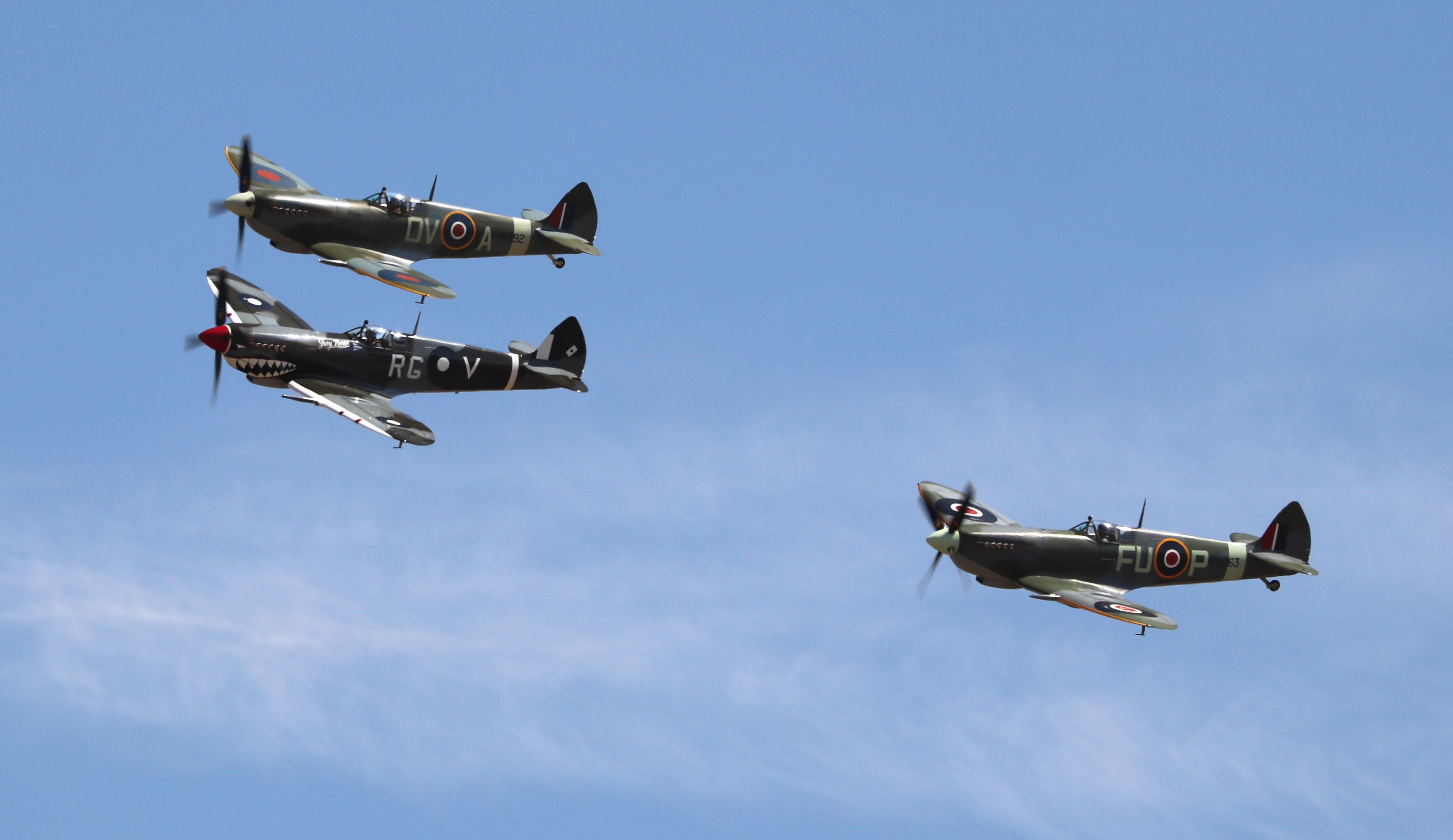 Spitfire Trio Sunday - 2 Spitfire Trio Sunday - 2 by Colin Ford, on Flickr  Spitfire Trio Sunday 3 Spitfire Trio Sunday 3 by Colin Ford, on Flickr  Spitfire Trio Sunday 4 Spitfire Trio Sunday 4 by Colin Ford, on Flickr  Spitfire Trio Sunday 5 Spitfire Trio Sunday 5 by Colin Ford, on Flickr  Spitfire Trio Sunday 6 Spitfire Trio Sunday 6 by Colin Ford, on Flickr  Spitfire Trio Sunday 7 Spitfire Trio Sunday 7 by Colin Ford, on Flickr More tomorrow. |
|
|
|
Post by Mustang51 on Mar 10, 2021 21:13:42 GMT 12
Like No.3 of the Spit trio..........
|
|
|
|
Post by colford on Mar 11, 2021 8:54:21 GMT 12
Next batch of photos is from the solo Spitfire display performed by Cameron Rolph-Smith in Spitfire XVI TE392. Cam put on a very good, flowing display of the Spitfire both days, which drew a number of high compliments from a number of the warbird afficionados around me in the crowd. The display showed off well the lines and performance of the Spitfire, kept within a fairly tight display 'box' in front of the crowd. I know I appreciated the opportunity to see THREE Spitfires in Australian skies and also see this latest airworthy Spitfire in Australia displayed in company with TAM's resident two Spitfires. I hope we see TE392 as a semi-regular visitor to the larger events at Temora and other airshows across Australia.  Spitfire Solo Sunday 1 Spitfire Solo Sunday 1 by Colin Ford, on Flickr  Solo Spitfire Sunday 2 Solo Spitfire Sunday 2 by Colin Ford, on Flickr  Solo Spitfire Sunday 3 Solo Spitfire Sunday 3 by Colin Ford, on Flickr  Solo Spitfire Sunday 4 Solo Spitfire Sunday 4 by Colin Ford, on Flickr  Solo Spitfire Sunday 5 Solo Spitfire Sunday 5 by Colin Ford, on Flickr 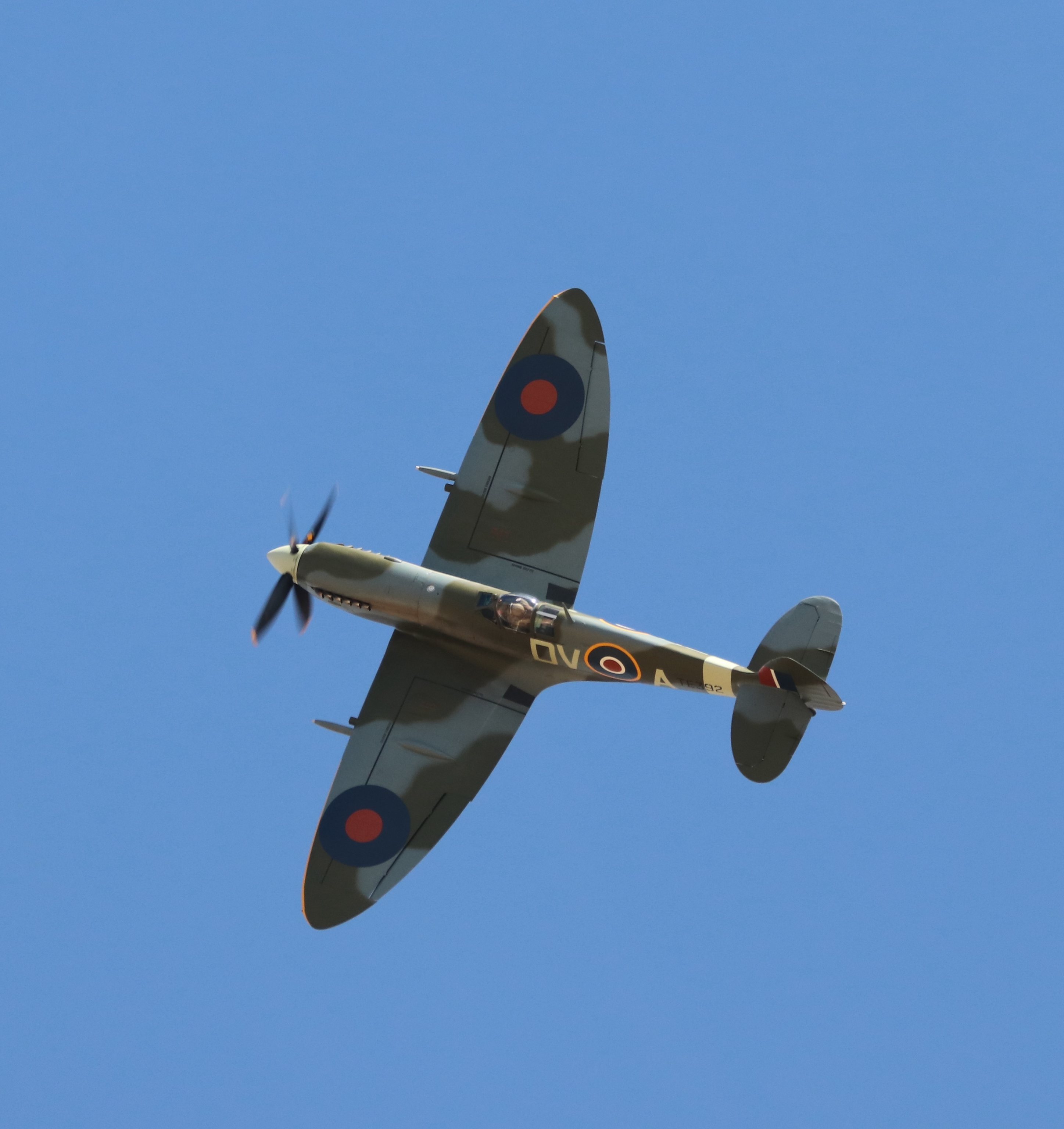 Solo Spitfire Sunday 6 Solo Spitfire Sunday 6 by Colin Ford, on Flickr  Solo Spitfire Sunday 7 Solo Spitfire Sunday 7 by Colin Ford, on Flickr  Solo Spitfire Sunday 8 Solo Spitfire Sunday 8 by Colin Ford, on Flickr  Solo Spitfire Sunday 9 Solo Spitfire Sunday 9 by Colin Ford, on Flickr  Solo Spitfire Sunday 10 Solo Spitfire Sunday 10 by Colin Ford, on Flickr  Solo Spitfire Sunday 11 Solo Spitfire Sunday 11 by Colin Ford, on Flickr 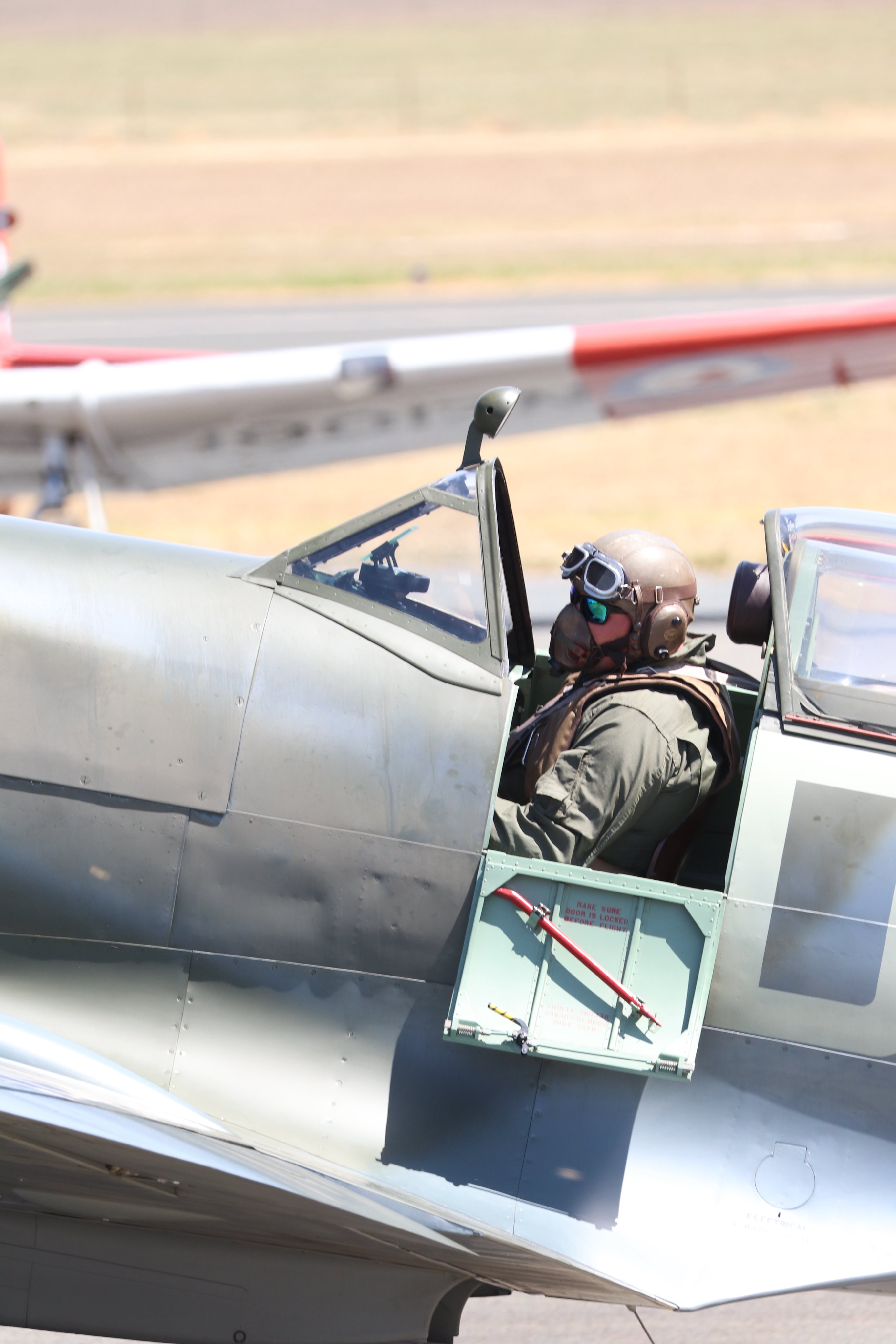 Fighter Pilot Fighter Pilot by Colin Ford, on Flickr |
|
|
|
Post by planecrazy on Mar 11, 2021 9:11:31 GMT 12
Awesome set thank you.
|
|
|
|
Post by Dave Homewood on Mar 11, 2021 10:54:14 GMT 12
Really cool photos Colin!!
|
|
|
|
Post by colford on Mar 11, 2021 14:34:59 GMT 12
A few more from Sunday. Roulette Seven made a departure between airshow segments and made a low key "exit, stage left".  Roulette 7 Departing Sunday Roulette 7 Departing Sunday by Colin Ford, on Flickr Avenger Sunday Display  Avenger Sunday Hi Side Avenger Sunday Hi Side by Colin Ford, on Flickr  Avenger Sunday Hi Side 2 Avenger Sunday Hi Side 2 by Colin Ford, on Flickr  Avenger Sunday Touch Down Avenger Sunday Touch Down by Colin Ford, on Flickr And takes a wing fold bow in front of the crowd.  Avenger Sunday Take A Bow Avenger Sunday Take A Bow by Colin Ford, on Flickr Then it was Pacific Trio of Hudson and two Boomerangs.  Boomerang Sunday Runup Dusty Boomerang Sunday Runup Dusty by Colin Ford, on Flickr 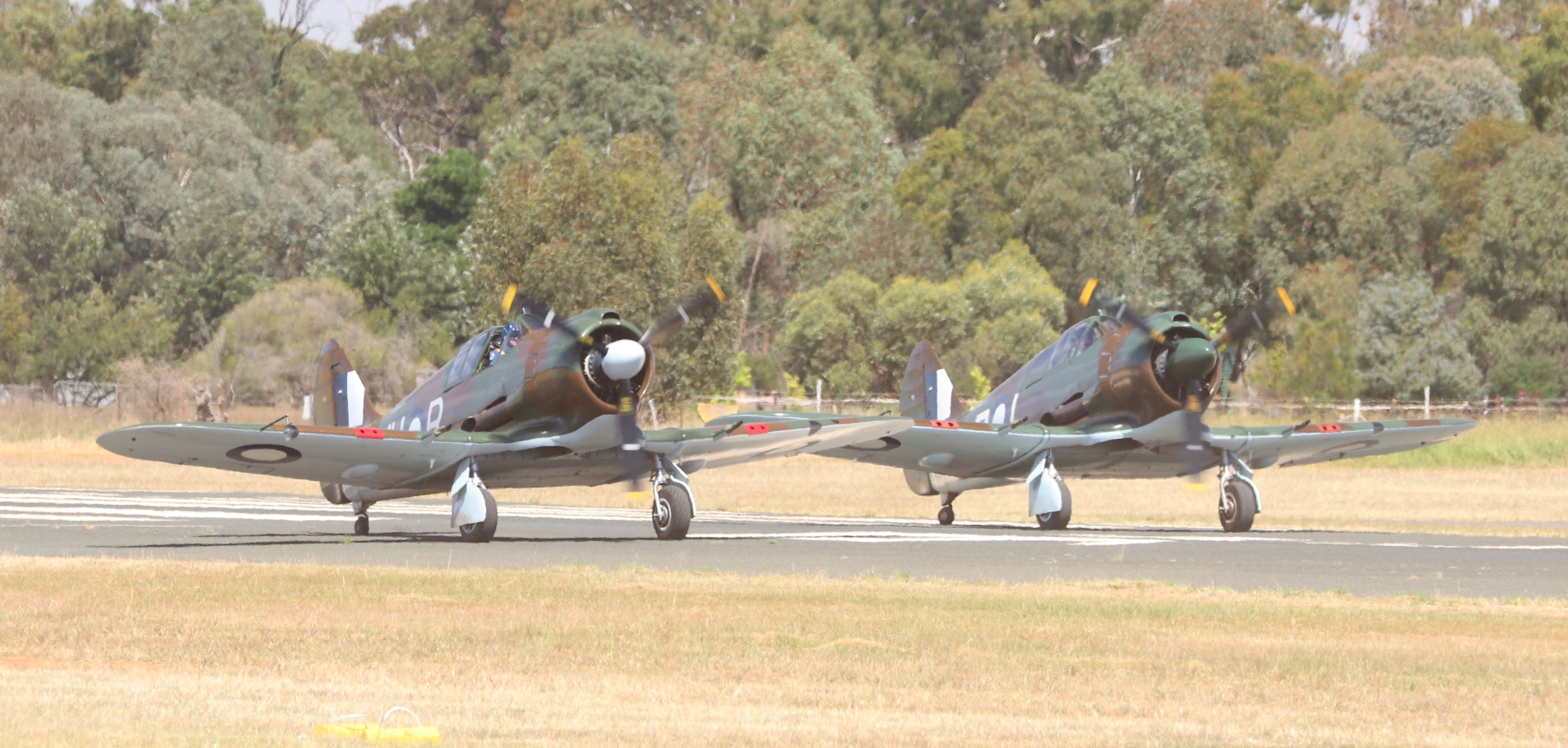 Boomerang Sunday Pair Ready Boomerang Sunday Pair Ready by Colin Ford, on Flickr  Boomerang Sunday Two Rolling Boomerang Sunday Two Rolling by Colin Ford, on Flickr  Hudson Sunday Bombing Run Hudson Sunday Bombing Run by Colin Ford, on Flickr  Pacific Trio Sunday - 1 Pacific Trio Sunday - 1 by Colin Ford, on Flickr  Pacific trio Sunday- 2 Pacific trio Sunday- 2 by Colin Ford, on Flickr  Pacific Trio Sunday - 3 Pacific Trio Sunday - 3 by Colin Ford, on Flickr 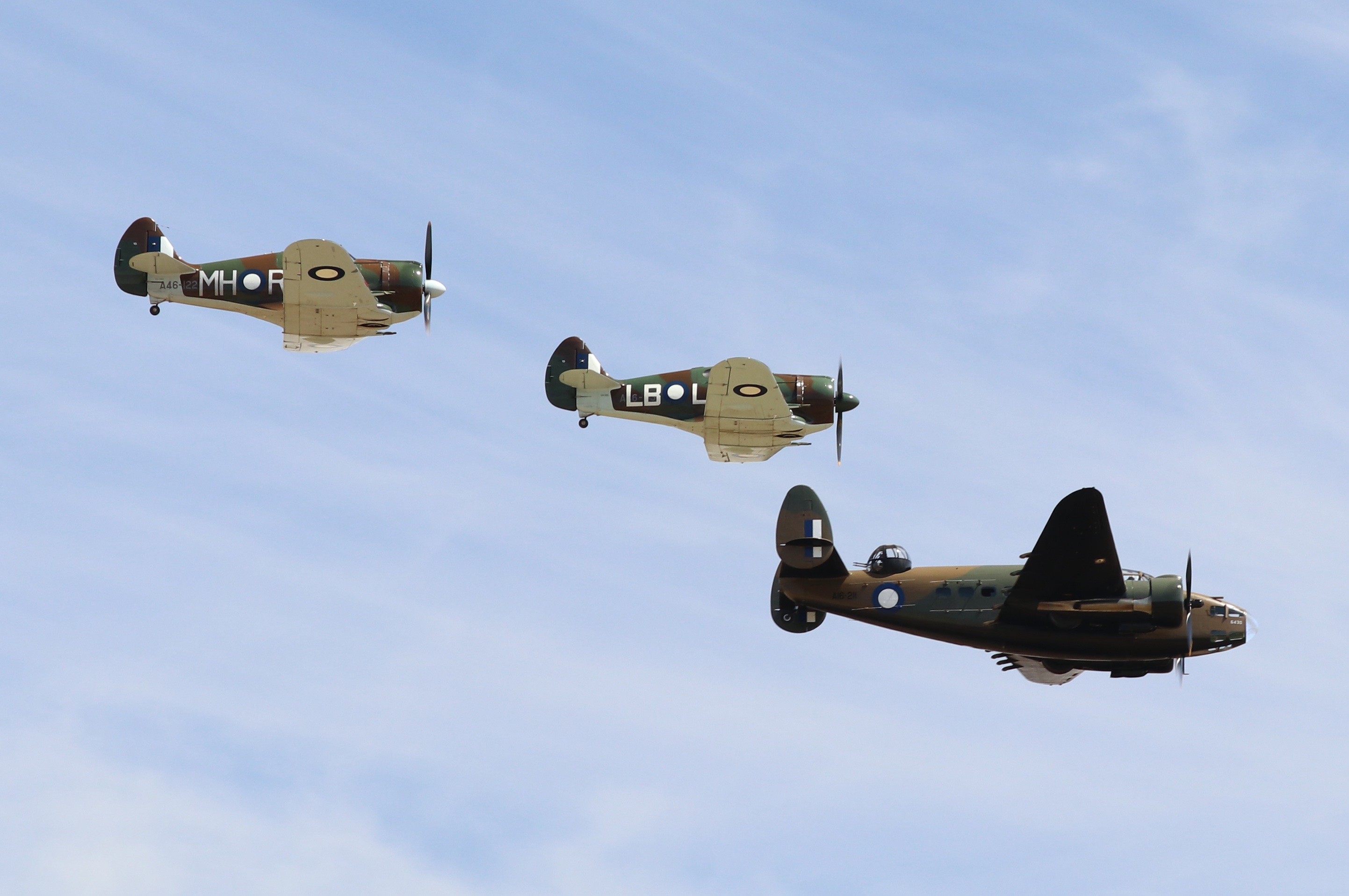 Pacific Trio Sunday - 4 Pacific Trio Sunday - 4 by Colin Ford, on Flickr  Boomerang Pair Sunday - 1 Boomerang Pair Sunday - 1 by Colin Ford, on Flickr  Boomerang Pair Sunday - 2 Boomerang Pair Sunday - 2 by Colin Ford, on Flickr The HARS Catalina "Black Cat" did not display on the Sunday. It had done an engine run up earlier on Sunday to see if a technical issue which had been present on the Saturday had been cured, however it wasn't and so the Catalina did not display on Sunday. Then came the V-12 formation take-offs. 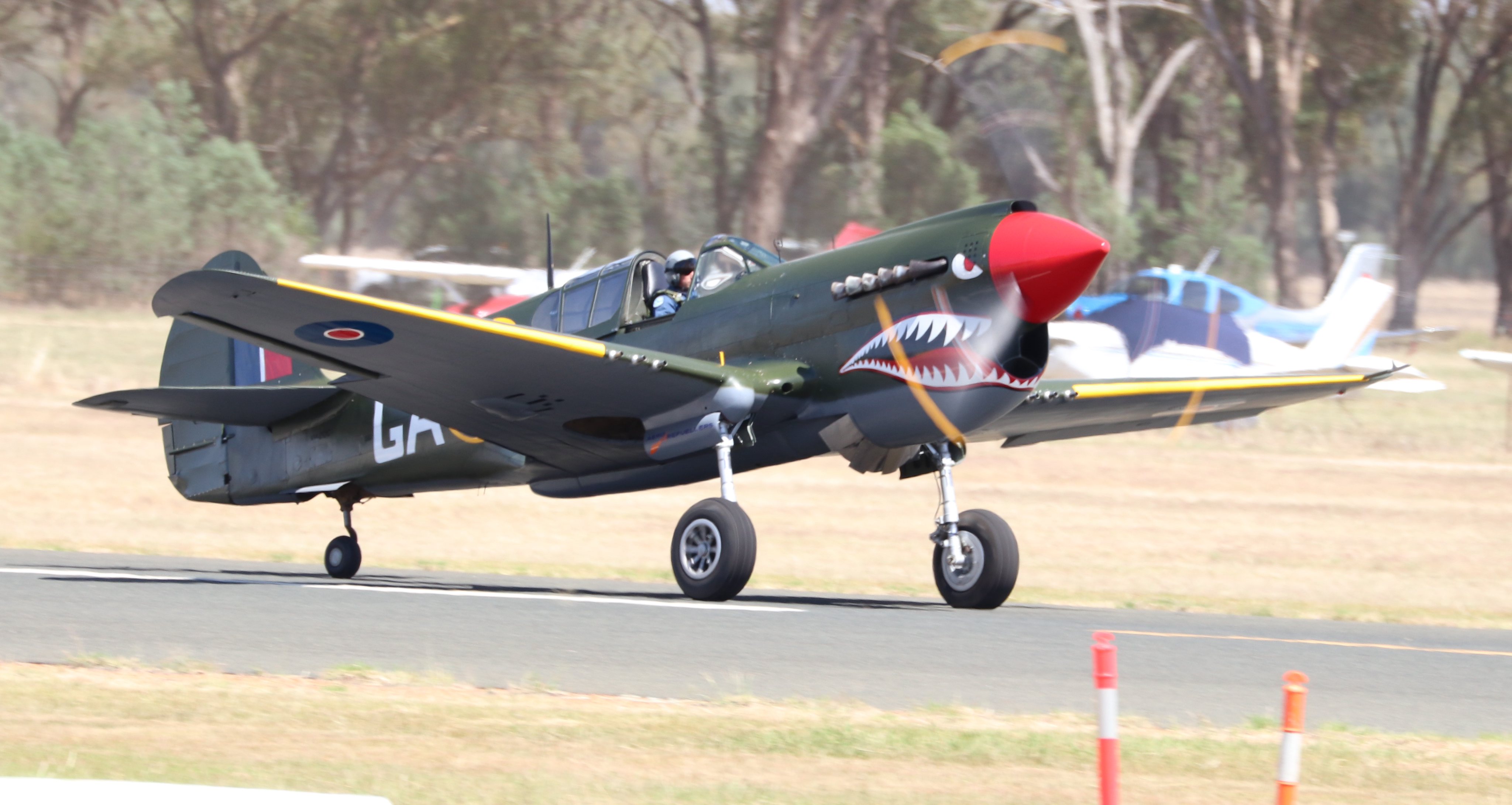 Sharkmouth Sunday Rolling Sharkmouth Sunday Rolling by Colin Ford, on Flickr  VH-AUB Sunday Rolling VH-AUB Sunday Rolling by Colin Ford, on Flickr  Checkertail Sunday Rolling Checkertail Sunday Rolling by Colin Ford, on Flickr 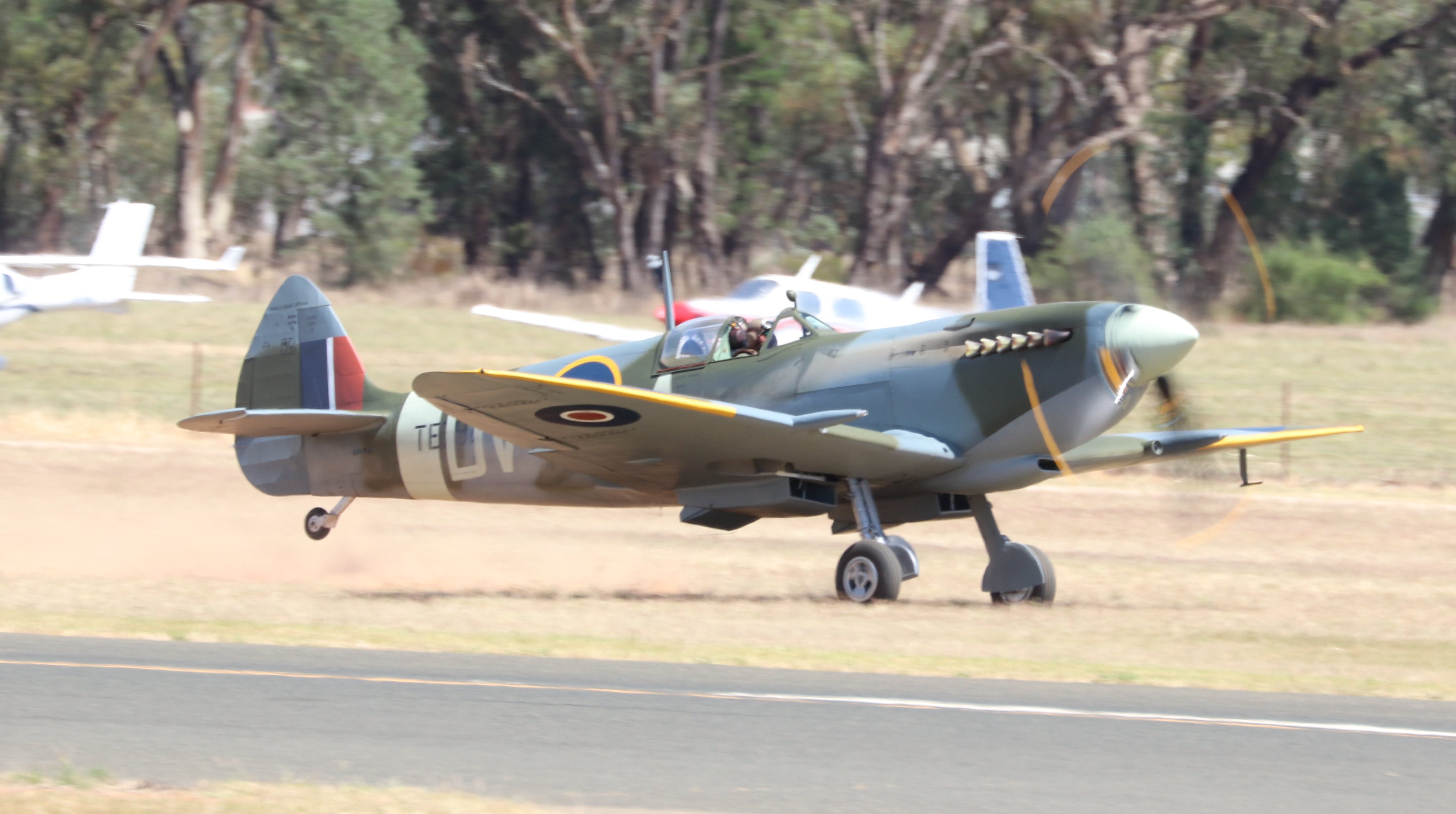 TE392 Sunday Rolling TE392 Sunday Rolling by Colin Ford, on Flickr  TB863 Sunday Rolling TB863 Sunday Rolling by Colin Ford, on Flickr That's all for now, going cross eyed from going through all the photos that I took. |
|
|
|
Post by johnnyfalcon on Mar 11, 2021 19:11:01 GMT 12
I'm confused. On the Port fuselage side of TB863 we see the squadron and airframe codes: FU-P and on the Starboard side we see them repeated: P-FU This is how I have always understood the format to be. Squadron forward, aircraft rear.
But on Spitfire TE392 we see DV-A on both sides - with a subsequent shift in the location of the letters relative to the other aircraft markings. Likewise the two Boomerangs.
Why the inconsistency?
|
|
|
|
Post by Mustang51 on Mar 11, 2021 19:58:39 GMT 12
I do not know Grasshopper.........
|
|
|
|
Post by Dave Homewood on Mar 11, 2021 20:23:42 GMT 12
|
|
|
|
Post by Dave Homewood on Mar 11, 2021 20:34:13 GMT 12
Unit markings were usually applied in the field after the aircraft was delivered. Some units probably did not check the manuals and just slapped them on as quickly as they could to get the aircraft into service. |
|
|
|
Post by colford on Mar 11, 2021 23:32:23 GMT 12
I'm confused. On the Port fuselage side of TB863 we see the squadron and airframe codes: FU-P and on the Starboard side we see them repeated: P-FU This is how I have always understood the format to be. Squadron forward, aircraft rear. But on Spitfire TE392 we see DV-A on both sides - with a subsequent shift in the location of the letters relative to the other aircraft markings. Likewise the two Boomerangs. Why the inconsistency? Good question. I went to my usual go to sources for matters relating to the official RAF orders and specifications for the application of camouflage and markings to RAF WW2 aircraft, being the series of Air Ministry Orders, along with Air Publication 2656A and D.T.D. Circular 360 covering application of camouflage and markings for RAF WW2 aircraft. RAF Museum did a consolidated facsimile reprint of this documentation which I believe is still in print and available from them. Also some other stuff found in various files from the UK Archives. Basically the AMOs said "Code letters to indicate squadrons and identity of individual aircraft. (i) Two letters to indicate number of squadron. Location: Either forward or aft of the national marking on both sides of the fuselage. (ii) One letter to indicate individual aircraft. Location: On the other side of the aircraft national marking on both sides of the fuselage. This basic principle was carried through in all the AMOs from 1939 to 1945. The one noted exception was in the 1942-3 AMOs where the location of the Squadron id and individual aircraft id letters and placement on Boston/Havoc aircraft was to differ in having squadron id letters on rear fuselage near roundel and individual aircraft id letter on nose of aircraft. The implementation of the AMOs and adherence to them, was then left to Commands, Groups and Wings. This is where some of the variation in ordering comes in where Commands, Groups or Wings did or did not prescribe in detail about positioning of the squadron id letters and individual aircraft id letters. Variation also arose where aircraft were delivered to units from Maintenance Units that were under a different Command or Group. The other factor noted in the AMOs was space available on the fuselage of a particular aircraft, both fore and aft of the fuselage roundel for placement of the squadron id and aircraft id letters in the required sizes as set out in the AMO. So there was some lee-way in how they were placed based on the space available to paint them on the fuselage and also lee-way to reduce the specified size for a broad aircraft type eg fighter or bomber, if the fuselage size did not permit the full sized application of the letters. For example the specified national marking size and fighter id code letter sizes specified for fighter types would not have fitted on the fuselage of a Westland Whirlwind, so they were reduced proportionally to fit the fuselage size. As Dave indicated, squadron id letters and aircraft individual id letters were usually painted on to aircraft at the Squadron level when they were received from a MU. In the instance where squadrons were rotated between front line and rear areas and left their aircraft in place, as often happened with fighter squadrons, then the incoming squadron taking over the aircraft would usually just overpaint the old squadron's id code letters on the aircraft with their own, leaving the individual aircraft id letters in place. So placement could sometimes be dictated by which squadron within which wing, or group had previously operated the aircraft being passed on to the incoming squadron. As an interesting aside, is does say in the AMOs, "The presence, absence or position of code letters cannot be regarded as an indication of friendly or hostile character." |
|
|
|
Post by JDK on Mar 12, 2021 11:07:07 GMT 12
I'm confused. On the Port fuselage side of TB863 we see the squadron and airframe codes: FU-P and on the Starboard side we see them repeated: P-FU This is how I have always understood the format to be. Squadron forward, aircraft rear. But on Spitfire TE392 we see DV-A on both sides - with a subsequent shift in the location of the letters relative to the other aircraft markings. Likewise the two Boomerangs. Why the inconsistency? Col's given an excellent admin answer, and Dave a very pragmatic one. In application (literally) there was huge variation in how squadron codes and individual aircraft letters were applied, including where the combination arrangement couldn't be applied as specified, due to the aircraft's shape. Even Spitfires. The current forum headers of three Spitfires gives a great example of variation, with the Mk.XIV with a single letter, the Mk.IX with an unusual two-letter only, and the TR.IX with the 'standard' - that wasn't. Three different theatre schemes also. A wander through British Commonwealth WWII aircraft photos would be most revealing in the variety of actually what was seen. It's partly possible to tell some national user from the style of code letter, though it's rarely the major clue - think RCAF types where underlines were quite common. Worth mentioning also that the early USAAF units in the UK also used the same layout initially, both fighters and bombers, but this consistency across allied arms was less important to the Americans and they moved away from it to their own preferences, including the tail letter model. See the original Memphis Belle scheme below. 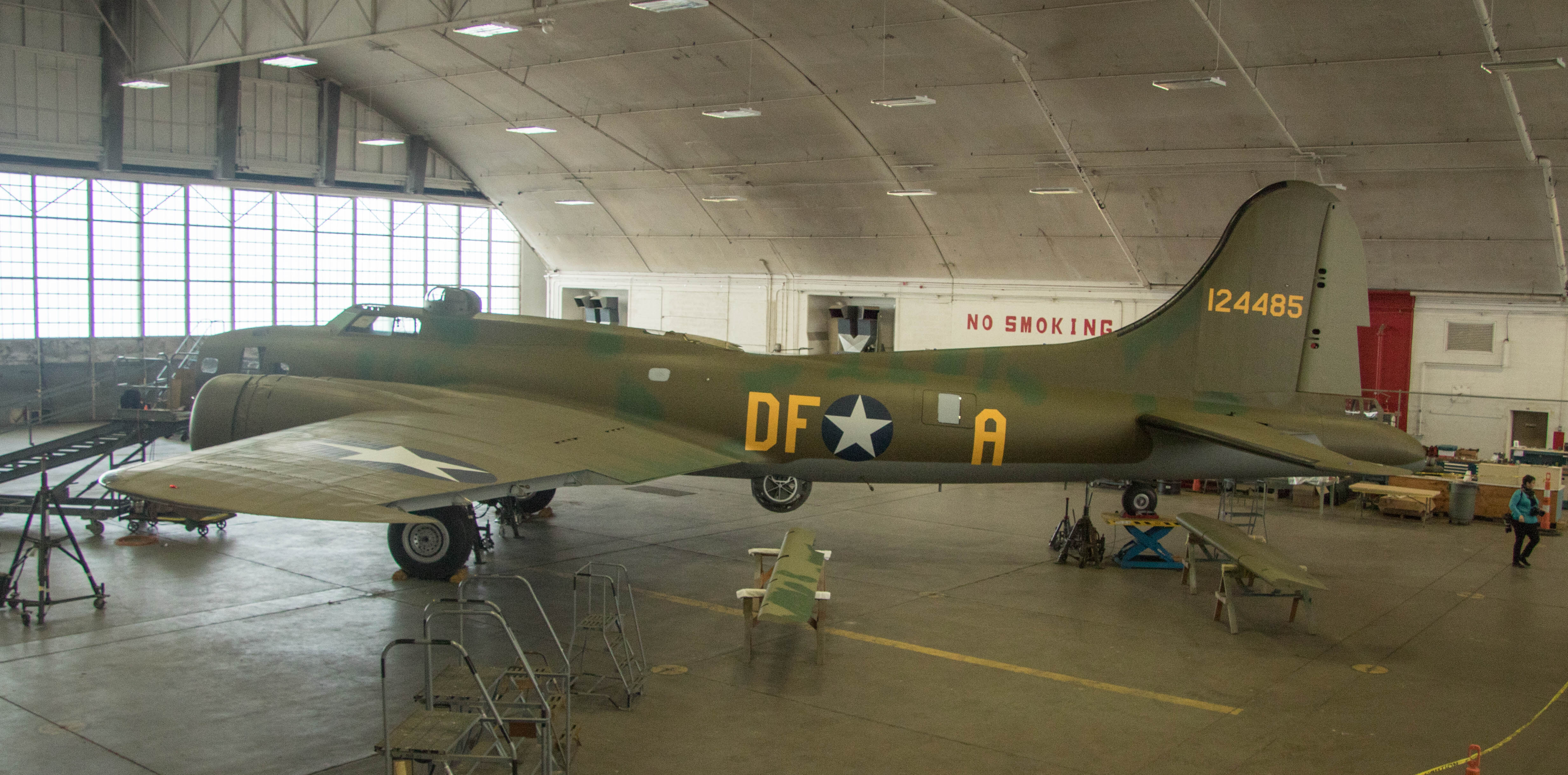 |
|
|
|
Post by johnnyfalcon on Mar 12, 2021 13:03:09 GMT 12
Thanks guys! It fits with what we've also noted regarding the placement and position of the Roundels on RNZAF Mosquitoes - human factors, among other limitations
|
|



